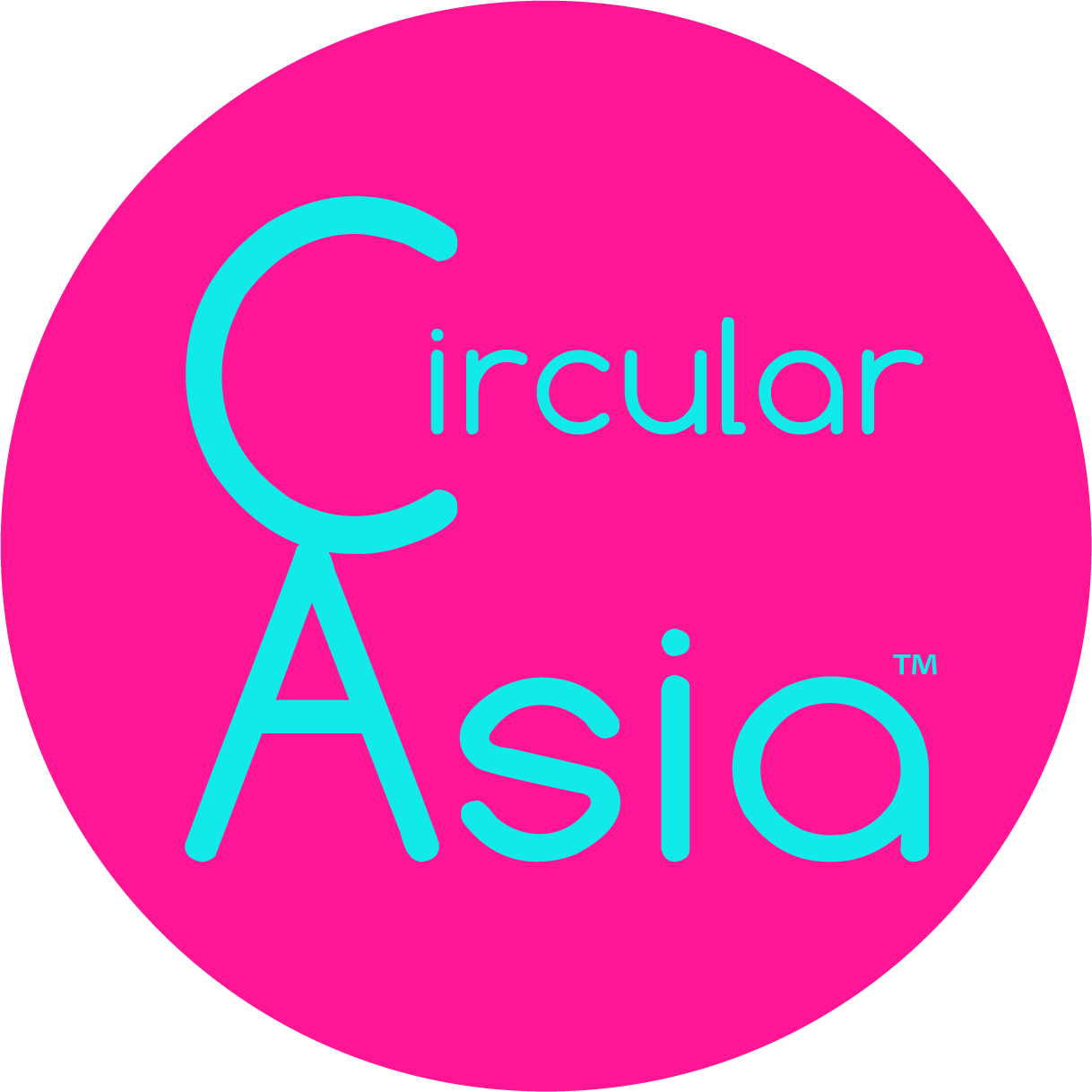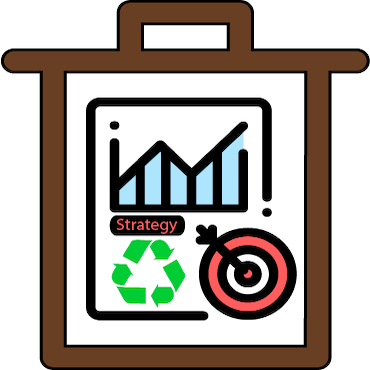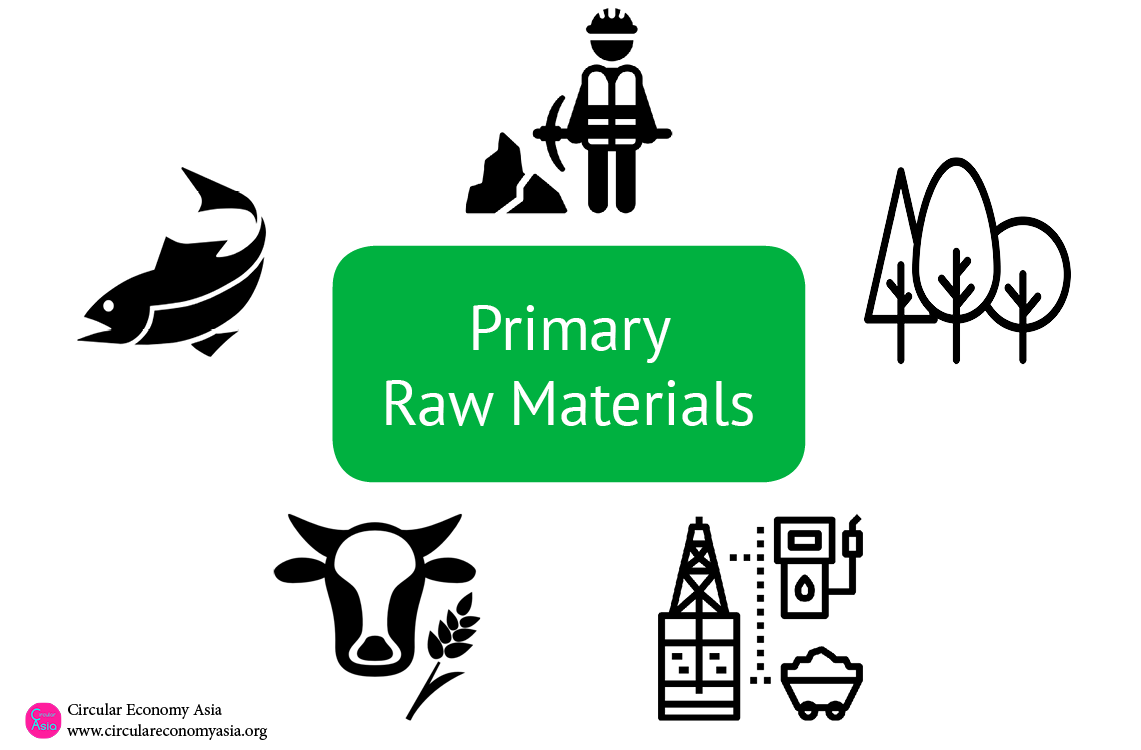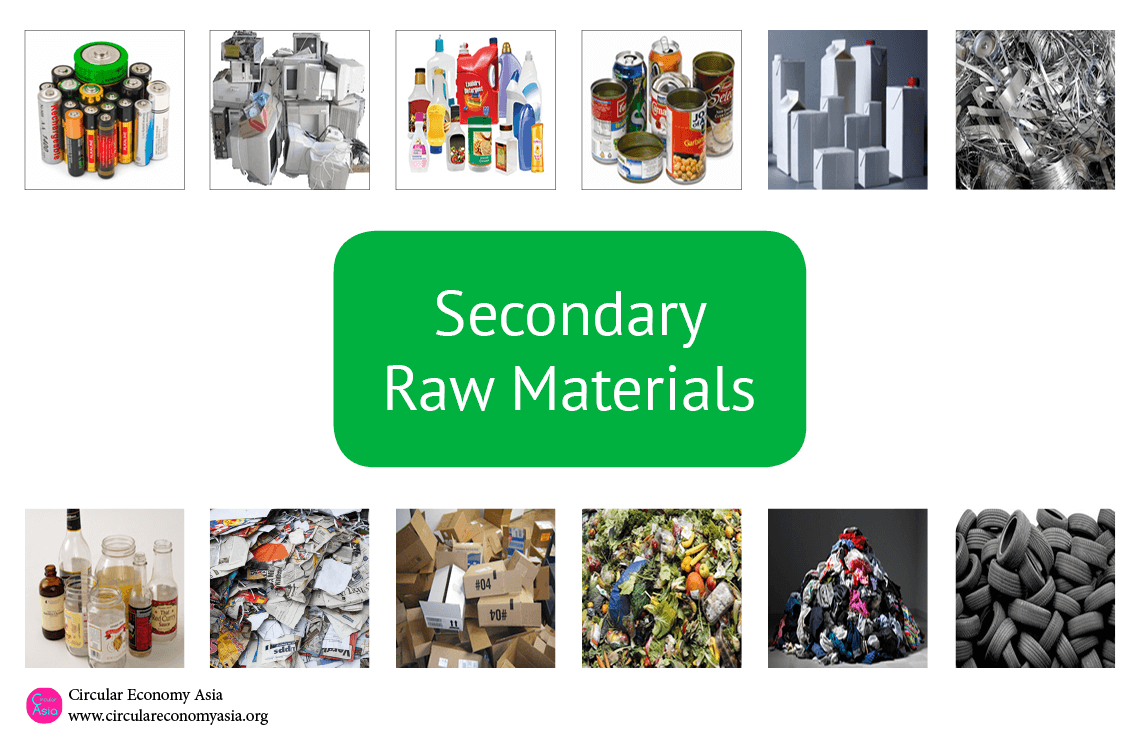Recyclable Resources for a Circular Economy
Here at Circular Economy Asia, we prefer to call recycling – Recyclable Resource Recovery. For a product to be completely recyclable, it must be designed in a way so all of the components to be economically separated and made from materials that are free from toxic chemicals and can be reprocessed for reuse by manufacturers.
The design stage will determine how much value can be retained by the product at the end of the final use-cycle. Many of the products we consume today cannot be reprocessed, and so valuable secondary raw materials are lost.
Primary and Secondary Raw Materials
What are primary and secondary raw materials? Primary raw materials are also known as feedstock, unprocessed materials, or primary agricultural commodities. They are the basic materials used to produce food, manufactured products, create energy, or are intermediate materials which are feedstock for future finished products. As feedstock, the term indicates these materials can become bottleneck assets (a continual flow is required to maintain production) and are highly important with regard to producing other products.
Secondary raw materials are reprocessed materials from end of use-cycle products which can be used in manufacturing processes instead of or alongside virgin raw materials. The use of secondary raw materials can present a number of advantages, including increased security of supply, reduced energy use, reduced impacts on the climate, the environment and manufacturing costs.
However, the use of secondary raw materials faces a number of barriers, including the absence of quality standards for certain materials (such as plastics), difficulties linked to the trading of secondary raw materials, and the potential presence of chemicals of concern in existing materials
Energy and CO2 Savings
Here are a few examples of the energy and CO2 savings from secondary raw materials:
Paper: For every 100,000 tonnes of paper:
Energy requirement for primary production: 3520TJ Carbon footprint for primary production: 0.17ktCO2
Energy requirement for secondary production: 1880TJ Carbon footprint for secondary production: 0.14ktCO2
Aluminium: For every 100,000 tonnes of aluminium production from delivered ore concentrate and scrap:
Energy requirement for primary production: 4700TJ Energy requirement for secondary production: 240TJ
Carbon footprint for primary production: 383kt CO2 Carbon footprint for secondary production: 29kt CO2
Glass: The European Container Glass Federation Life Cycle Analysis study shows that every tonne of recycled glass saves 670 kg of CO2 on a cradle to cradle basis. Expressed in terms of percentages, melting 100% cullet (broken glass) reduces the CO2 emissions by about 58% compared to a situation where no cullet is used.
Definitions
Terajoule (TJ): The joule (symbol: J) is a derived unit of energy in the International System of Units. The terajoule (TJ) is equal to one trillion (1012) joules.
kt: Carbon dioxide emissions are those stemming from the burning of fossil fuels, the manufacture of cement and other human activities. The unit of measurement is kt (kiloton).
Energy measurement: One potential variation in energy use between countries or regions depends upon the nature of the energy source, ranging from efficient hydroelectric production of electricity to the use of low-grade coals.
Plastics Resource Recovery
There are two ways to process plastics:
Chemical recycling: Any process by which a polymer is chemically reduced to its original monomer form so that it can eventually be processed (re-polymerized) and remade into new plastic materials that go on to be new plastic products. Chemical recycling helps us overcome the limits of mechanical recycling. It also helps manufacturers continue to push the boundaries of how, and where, recycled plastics can be used. Chemical recycling has long been used for nylons, and the industry is working to make it possible for other resin types.
Mechanical recycling: In most cases, a multi-step process is used to produce materials that make new plastic products. That process usually includes grinding, washing, separating, drying, regranulating and compounding.
To learn more, click on the icons or text below.
Knowledge Centre
This section covers the following topics: News Articles, Business, Chemical Recycling, Compliance, Container Deposit Schemes, E-Waste, Extender Producer Responsibility (EPR), Informal Sectors (E-Waste, Medical Waste & Solar Panel Recycling), General Information, Research, Separation-at-Source, Tetra Pak, Waste Auditing and Zero Waste.
Videos include Plastics Recycling, E-Waste, Glass, Metals, Polystyrene & Styrofoam, Paper, Business Opportunities and Recycling Schemes.
For country-specific regulations or initiatives, please refer to our ‘Country‘ page for additional resources.
References
- Joule: Wikipedia
- kt: Indexmundi
- ‘Report on the Environmental Benefits of Recycling’ published by the Bureau of International Recycling, 2008
- Chemical and mechanical plastic recycling from the US Plastics Industry Association
- Icons – visit the Acknowledgements page for sources
References
- Knowledge Centre: Freepik from Flaticon
- Information: CleanPNG
- Video: Freepik
- Links: Icon Finder
- Molecules images: Freepik from Flaticon
- Recycling image: Freepik from Flaticon
- Resource Recovery logo image: Original from Alice Design listed on The Noun Project. The original design has been extensively modified and coloured.








